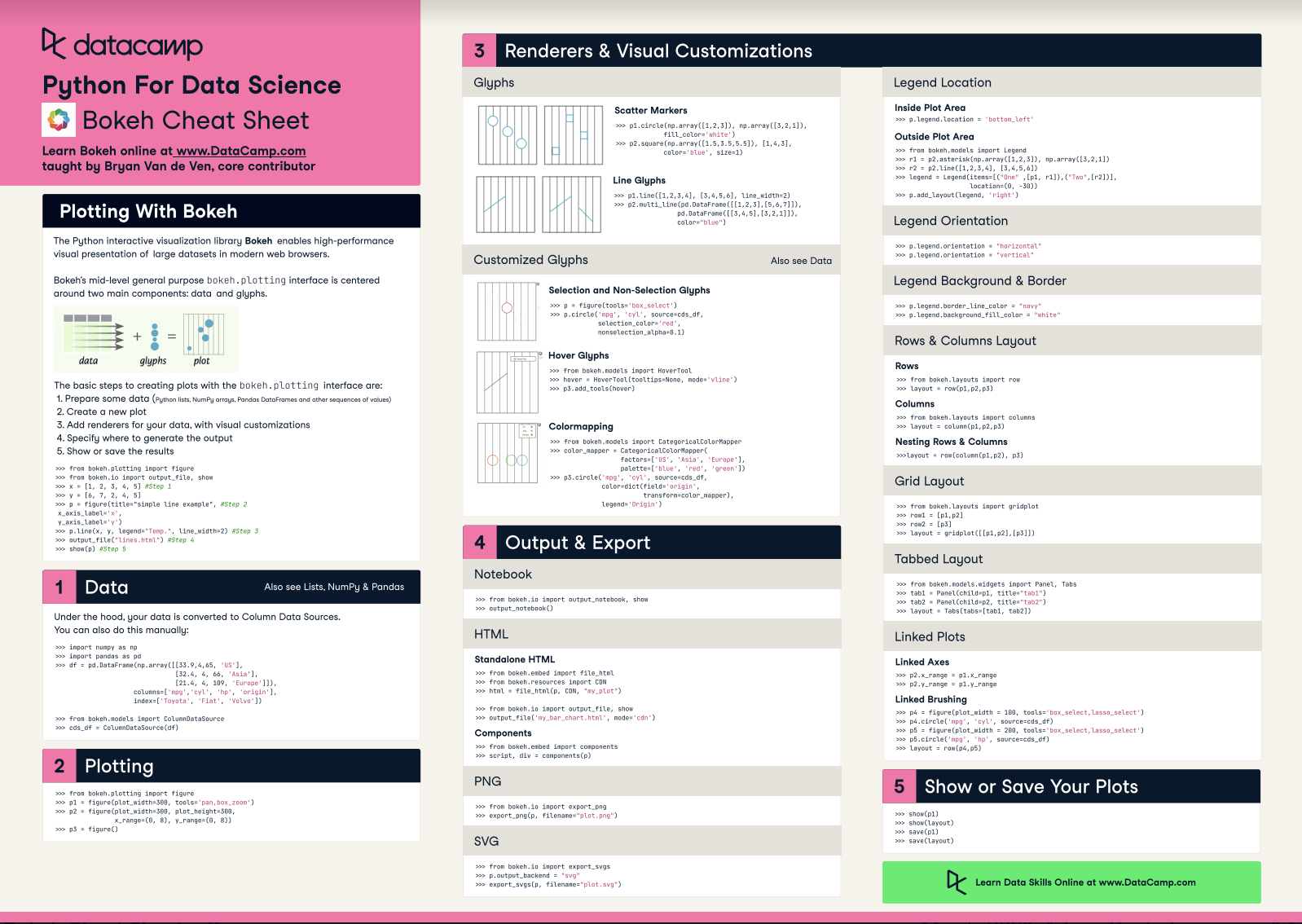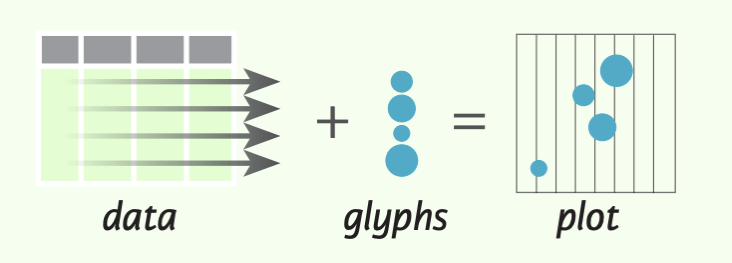Python Data Visualization: Bokeh Cheat Sheet
A handy cheat sheet for interactive plotting and statistical charts with Bokeh.
Jul 2021 · 5 min read
RelatedSee MoreSee More
cheat sheet
Matplotlib Cheat Sheet: Plotting in Python
This Matplotlib cheat sheet introduces you to the basics that you need to plot your data with Python and includes code samples.
Karlijn Willems
6 min
cheat sheet
Python Seaborn Cheat Sheet
This Python Seaborn cheat sheet with code samples guides you through the data visualization library that is based on Matplotlib.
Karlijn Willems
2 min
cheat sheet
Python for Data Science - A Cheat Sheet for Beginners
This handy one-page reference presents the Python basics that you need to do data science
Karlijn Willems
4 min
cheat sheet
Plotly Express Cheat Sheet
Plotly is one of the most widely used data visualization packages in Python. Learn more about it in this cheat sheet.
Richie Cotton
0 min
tutorial
Data Visualization with Bokeh Tutorial: Getting Started
Learn the important basics and installation process of Bokeh
DataCamp Team
7 min
tutorial
Python For Data Science - A Cheat Sheet For Beginners
This handy one-page reference presents the Python basics that you need to do data science
Karlijn Willems
7 min






